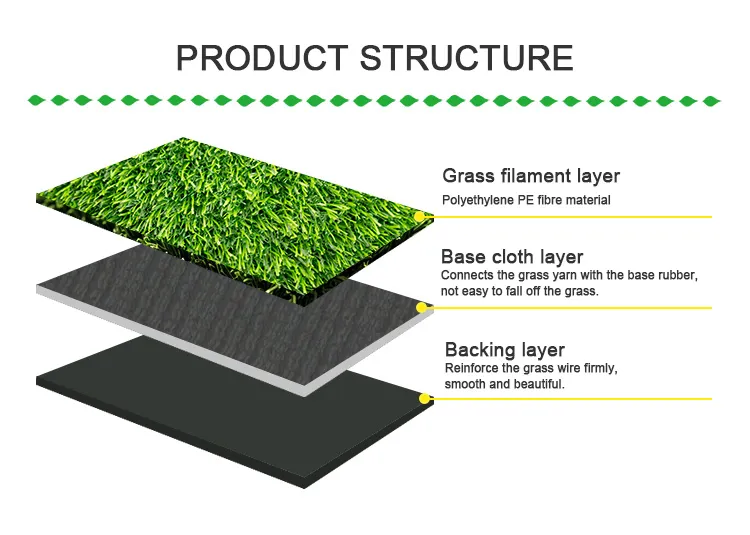
- Afrikaans
- Arabic
- Belarusian
- Bengali
- Czech
- Danish
- Dutch
- English
- Esperanto
- Estonian
- Finnish
- French
- German
- Greek
- Hindi
- Hungarian
- Icelandic
- Indonesian
- irish
- Italian
- Japanese
- kazakh
- Rwandese
- Korean
- Kyrgyz
- Lao
- Latin
- Latvian
- Malay
- Mongolian
- Myanmar
- Norwegian
- Persian
- Polish
- Portuguese
- Romanian
- Russian
- Serbian
- Spanish
- Swedish
- Tagalog
- Tajik
- Thai
- Turkish
- Turkmen
- Ukrainian
- Urdu
- Uighur
- Uzbek
- Vietnamese
turf and artificial grass
Dec . 22, 2024 14:17 Back to list
Understanding Turf and Artificial Grass Enhancements in Modern Landscaping
In recent years, the demand for sustainable landscaping options has surged, leading to a significant increase in the popularity of turf and artificial grass. These alternatives to traditional grass lawns provide a range of benefits, including reduced maintenance, water conservation, and aesthetic versatility. Understanding the different types of turf available and their applications can help homeowners and businesses make informed decisions about their landscaping needs.
What is Artificial Grass?
Artificial grass, often referred to as synthetic turf, is an engineered product designed to mimic the appearance and texture of natural grass. It is typically made from polymer fibers and comes in various colors, textures, and densities to replicate different types of grass. The development of artificial grass has come a long way since its inception in the mid-20th century; modern versions are more realistic, durable, and environmentally friendly than ever before.
Benefits of Artificial Grass
1. Low Maintenance One of the most significant advantages of artificial grass is its minimal maintenance requirements. Unlike natural grass, which needs regular mowing, watering, and fertilizing, artificial grass requires little more than occasional brushing and rinsing. This not only saves time but also reduces the need for chemical fertilizers and pesticides, making it an eco-friendlier option.
2. Water Conservation In regions where water scarcity is a concern, the use of artificial grass can lead to substantial water savings. Natural lawns can consume hundreds of gallons of water weekly during peak growing seasons. Artificial grass eliminates the need for irrigation systems, making it a practical choice for arid climates.
3. Durability High-quality artificial grass is built to withstand the wear and tear associated with heavy use, making it ideal for high-traffic areas such as sports fields, playgrounds, and pet zones. It maintains its color and structural integrity over time, without the need for re-sodding or reseeding.
4. Year-Round Aesthetics Synthetic turf remains lush and green throughout the year, regardless of the climate. This means that homeowners can enjoy a beautiful lawn in all seasons without worrying about brown patches or bare spots typically caused by drought or disease in natural grass.
Applications of Artificial Grass
turf and artificial grass

Artificial grass is versatile and can be used in various applications beyond residential lawns. Here are some common uses
- Sports Facilities Many schools, universities, and professional sports teams have adopted artificial turf for their fields. It provides a consistent playing surface that can be used in various weather conditions, reducing game cancellations due to rain or snow.
- Commercial Properties Businesses often choose synthetic grass for landscaping to enhance curb appeal. It requires less maintenance than traditional landscaping, allowing employees to focus on core activities rather than lawn care.
- Playgrounds and Parks Safety is a primary concern in children’s play areas. Artificial grass not only reduces the risk of injury thanks to its softer surface but also minimizes mud and dirt tracked into buildings.
- Rooftop Gardens and Balconies Urban dwellers with limited space have found artificial grass to be a perfect solution for creating green spaces on rooftops and balconies, contributing to the aesthetics of high-rise living.
Environmental Considerations
While synthetic turf offers numerous benefits, it also raises environmental concerns, particularly regarding its materials and disposal. Many manufacturers are now producing eco-friendly options made from recycled materials, and advancements in recycling methods are improving the prospects for repurposing old turf.
Conclusion
The emergence of turf and artificial grass represents a significant evolution in landscaping practices. By providing low-maintenance, water-efficient, and durable solutions, synthetic turf is reshaping the way we think about outdoor spaces. As technology continues to advance, the future of artificial grass looks bright, promising even more environmentally friendly options that meet the demands of modern living. Whether integrated into a backyard, commercial landscape, or public park, artificial grass is undoubtedly a valuable addition to our green spaces.
-
The Benefits of Artificial Turf for Indoors
NewsJul.15,2025
-
How Artificial Grass Suppliers Ensure Quality Products
NewsJul.15,2025
-
Artificial Grass and Pets: A Space for Relaxation
NewsJul.08,2025
-
Balcony & Outdoor Decoration with Artificial Grass
NewsJul.08,2025
-
Best Indoor Artificial Grass for Home
NewsJul.07,2025
-
Best Pet Turf for Dogs: Safe & Durable Artificial Grass Options
NewsJul.07,2025
Products categories









